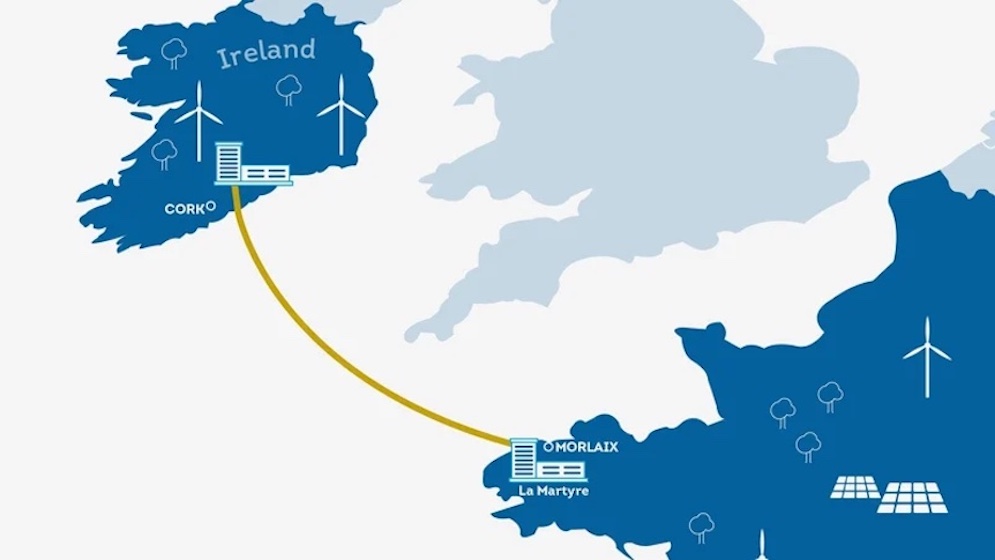- BY Kevin Barry BSc(Hons) MRICS
- POSTED IN Latest News
- WITH 0 COMMENTS
- PERMALINK
- STANDARD POST TYPE

The Celtic Interconnector is a high-voltage direct current (HVDC) submarine power cable project designed to link the electricity grids of Ireland and France for the first time, marking Ireland’s first direct interconnector with another EU member state following Brexit. And provides supply outside the British Isles, which had reliable supply issues in the early 1970’s, at the beginning of the Troubles.
It spans approximately 575 km in total, with around 500 km running under the Celtic Sea, connecting Knockraha in County Cork, Ireland, to La Martyre in Finistère, Brittany, France. The cable operates at a voltage of ±320 kV and has a capacity of 700 MW, enabling bidirectional electricity flow; it also includes a fiber optic communications link.
Developed as a joint venture between Ireland’s transmission system operator EirGrid and France’s Réseau de Transport d’Électricité (RTE), the project was designated a European Project of Common Interest (PCI) by the EU, with an estimated cost of €1.6 billion as of 2022.
Construction began in 2023, with key milestones including the completion of onshore cable ducting at Claycastle Beach in Youghal, Ireland, in May 2025, and the laying of the first 84 km of offshore HVDC cable in September 2025.
As of September 2025, the project is ongoing, with converter stations under construction in both countries and post-lay cable burial in progress, though delays in submarine cable manufacturing and installation have pushed the expected commissioning date to spring 2028.Looking ahead, the Celtic Interconnector is poised to deliver several key benefits once operational, primarily by integrating Ireland more fully into the European electricity market and advancing energy transition goals.
These include:-
Enhanced security of electricity supply:
It will allow Ireland and France to support each other during technical incidents, consumption spikes, or other disruptions, reducing the risk of blackouts and improving overall grid reliability for both nations.
Promotion of renewable energy integration and sustainability:
By facilitating the exchange of power, the interconnector will support the development of a more sustainable electricity mix, helping both countries incorporate higher shares of renewables (such as Irish offshore wind and French nuclear or solar) into their grids.
This aligns with EU targets, including a 40% reduction in greenhouse gas emissions from 1990 levels, at least 27% renewable energy in final consumption by 2030, and improved energy efficiency of at least 27-30%, contributing to a low-carbon future and the broader goal of a carbon-free Europe.
Economic and market advantages:
The project will enable freer movement of electricity flows across Europe, fostering a more open and competitive market that could lower electricity prices for consumers through better access to diverse energy sources and reduced reliance on imports from non-EU countries. For Ireland specifically, it ends the country’s post-Brexit isolation from the mainland EU power system, boosting energy independence and potentially creating opportunities for exporting surplus renewable energy.
Broader geopolitical and infrastructure impacts:
Beyond electricity, it strengthens ties between Ireland and France, enhancing cross-border cooperation in energy infrastructure and supporting the EU’s requirement for each member state to achieve at least 15% interconnection capacity relative to installed production.
This could pave the way for future interconnectors and greater grid flexibility amid rising renewable adoption.
